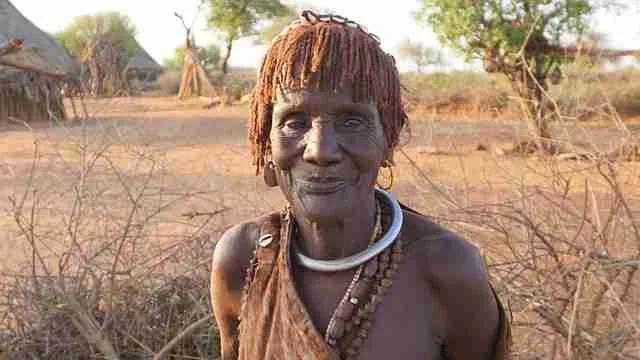Omo Valley in Ethiopia

Ethiopia - What to see in the Omo Valley
Exploring the Omo Valley Communities of Ethiopia
The Omo Valley in southern Ethiopia is a region of remarkable cultural diversity and natural beauty. Home to several distinct communities, this remote area offers a unique opportunity to learn about traditions that have been shaped over centuries. Each group contributes to the rich cultural mosaic of the valley, with practices, ceremonies, and ways of life that reflect deep connections to the land and one another.
Understanding the Omo Valley Communities
The Omo Valley communities include the Hamer, Karo, Mursi, Nyangatom, Suri, Bodi, Kwegu, and Arbore. These groups have lived in the region for generations, developing customs and social structures that reflect their environment and values. While each community is distinct, they share a strong sense of identity and resilience.
Hamer
The Hamer are known for their expressive body decoration and ceremonial practices. Scarification and body painting play a central role in their cultural life, especially during festivals. Cattle herding is a key part of their livelihood, and the bull jumping ceremony, marking a young man's transition into adulthood, is one of the most recognised traditions in the valley.
Karo
Living along the banks of the Omo River, the Karo community is celebrated for its geometric body art created with white clay. Fishing and farming sustain their daily lives, and their riverside settlements offer insight into how people adapt to and thrive in their surroundings.
Mursi
The Mursi are often recognised for the lip plates worn by women, which symbolise beauty and social status. These plates, along with clay earrings and other adornments, reflect cultural values and personal identity. The Mursi also engage in cattle herding and maintain strong communal ties.
Other Communities
Beyond these well-known groups, the Suri, Bodi, Kwegu, and Arbore communities each contribute to the valley’s cultural richness. The Suri are known for their elaborate body art and stick fighting ceremonies. The Bodi also practise bull jumping and decorate themselves with white clay and red ochre. The Kwegu, a smaller hunter-gatherer group, live in forested areas and maintain close relationships with nature. Meanwhile, the Arbore are pastoralists who inhabit the southern reaches of the valley, relying on livestock and seasonal movement.
Cultural Highlights of the Omo Valley
Bull Jumping Ceremonies
Bull jumping is a rite of passage observed by several Omo Valley communities, including the Hamer, Suri, and Bodi. This ceremony marks a young man's transition into adulthood and is both a physical and emotional challenge. Preparation involves months of training, where the participant learns to overcome fear and develop agility.
On the day of the event, the young man must leap over a line of bulls standing close together. Success signifies maturity and readiness for adult responsibilities. If he falls, he is encouraged to try again. These ceremonies are deeply meaningful and often accompanied by music, dance, and communal celebration.
Body Art and Personal Expression
Body art is a powerful form of expression among the Omo Valley communities. Each group has developed its own styles and techniques, using materials such as clay, ochre, and natural pigments. Scarification, painting, and adornment are used to mark life stages, celebrate identity, and prepare for ceremonies.
For example, Hamer individuals create intricate scar patterns, while Karo artists paint geometric designs across their bodies. Mursi women wear lip plates and clay jewellery, and Suri people combine scarification with elaborate headdresses. These practices are not only aesthetic but also carry cultural significance and personal meaning.
Ceremonial Life and Community Events
Ceremonies in the Omo Valley reflect important life events such as birth, marriage, and death. These gatherings strengthen community bonds and preserve cultural traditions. The Hamer bull jumping, Suri stick fighting, and Mursi lip plate insertion are among the most recognised events, each offering insight into values and social roles.
Visitors who attend these ceremonies often witness a blend of music, dance, storytelling, and ritual. Participation is usually limited to community members, but respectful observation can be a meaningful way to learn and connect.
Visiting the Omo Valley Communities
Responsible Travel and Cultural Respect
Visiting the Omo Valley requires sensitivity and respect. These communities have faced challenges including climate change, land loss, and development pressures. As a visitor, it’s important to approach with humility and a willingness to learn.
Travelling with a reputable tour operator helps ensure that visits are conducted ethically and with the community’s consent. Guides can facilitate introductions, explain customs, and help navigate cultural boundaries.
Practical Tips for Visitors
- Ask Permission: Before taking photos or videos, always ask for consent. Some communities may request a small fee, which helps support local livelihoods.
- Dress Modestly: Wearing modest clothing shows respect and helps you blend in more comfortably.
- Avoid Gifts: Refrain from giving money or sweets to individuals. Instead, support community initiatives or purchase locally made crafts.
- Prepare for the Journey: The Omo Valley is remote, and roads can be challenging. Bring essentials such as water, sun protection, and sturdy footwear.
- Stay Informed: Learn about the communities before you arrive. Understanding their history and values enhances your experience and helps build meaningful connections.
Preserving Cultural Heritage
The Omo Valley is recognised as a UNESCO World Heritage Site, highlighting its global importance. However, the communities face ongoing pressures that threaten their way of life. Climate change affects water sources and agriculture, while development projects can disrupt traditional land use.
Supporting sustainable tourism and cultural preservation efforts helps protect these communities and their heritage. By travelling responsibly and sharing what you learn, you contribute to a broader understanding and appreciation of cultural diversity.
Final Reflections on the Omo Valley Communities
The Omo Valley communities offer a rare opportunity to engage with living traditions that have endured for generations. Their ceremonies, body art, and daily practices reflect deep connections to the land and to one another. Visiting the region is not just about witnessing culture. I is about listening, learning, and respecting.
Whether you’re drawn by curiosity, a love of anthropology, or a desire to understand different ways of life, the Omo Valley invites you to explore with care. The journey may be challenging, but the insights gained are profound and lasting.
